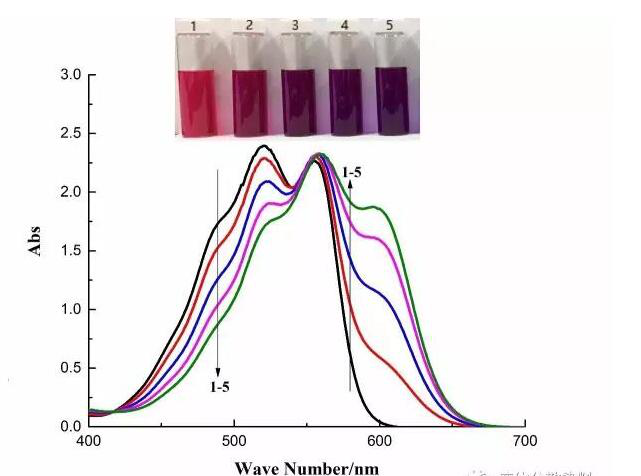The color light of dye refers to the color and brightness of textile fiber after dyeing. In business, the color light is an important sign of dye characteristics and evaluation of dye quality. For dye application, mastering the color light of dye is an important guarantee for the quality of dyeing and processing products. The color light of qualified commercial dyes must be consistent with the standard under the same dyeing conditions. The color light of disperse dyes depends on the structure of dyes, but it is also related to the synthesis route of dyes. Dyes with the same structure are often different due to different production processes between manufacturers.
The color and luster of the finished printing and dyeing products are closely related to the fiber quality and fabric structure specifications. The color light of disperse dyes usually refers to dyeing polyester. The color light of the same dye on polyester is the same or different from that of vinegar fiber, nylon fiber, acrylic fiber or other synthetic fiber. Therefore, the same fiber material must be specified when choosing dye and comparing dye shade. When the color light is measured visually, the light source has certain influence on the vision, usually under the natural light (non direct sunlight), because the light will produce different color light deviation to the disperse dye dyeing sample, the incandescent light tends to be red, if necessary, the color light of the dye should be evaluated under the standard light source. When receiving samples for dyeing and processing in foreign trade, it is necessary to pay attention to the difference of color and light under different light sources, because the color and light deviation of different kinds of disperse dyes under different light sources are different, and this phenomenon of light color change is called colorrendering. Dyestuff should be selected for color matching, and its color development should be better than that of cotton. The reflection spectrum curve of each dye in the dye sample is used as reference for color matching. The color matching samples need to do the reflection spectrum in advance, so that the selection of dyes can be based on. If the color matching effect of the finished dyeing product
and the sample under one light source is the same, but it is not the same under another light source, that is, the so-called conditional isochromatic, unless the dye used in the color matching is the same as the original dye used in the sample, the complete isochromatic can be achieved. If necessary, the colorimeter can be used to determine whether the color matching lights are equal and check the reflection spectrum curve of monochromatic dyes. The brightness of disperse dyes varies with varieties. For light color and printing products, disperse dyes with better brightness should be selected. According to the requirements of pattern design and color matching, disperse dyes with fluorescence can also be selected. The dyestuffs with higher brightness are usually distinguished by adding "brilliant" or "light" to their trade names. The fluorescent disperse dyes are limited to yellow, orange and red. Imported commercial dyestuffs shall be tested and controlled by dye sample (yarn or plant) and colorimeter respectively. Disperse dyes used in polyester are usually based on high temperature and high pressure (supplemented by hot-melt pad dyeing samples), and special personnel shall be responsible for visual color comparison. Vinegar fiber was dyed with disperse dye and diacetate fiber. The practical operation of yarn sample dyeing is divided into 95, 100 and 105 grades, and then the strength is compared one by one. The allowable error of visual strength of dyed yarn sample is ± 3%, and the difference of color and light is not more than grade 4 of gray card. The dyeing depth is 2 / 3 of the international standard depth
of fastness, which is obtained by conversion of dye concentration of 1 / 1 standard depth. However, for simplicity, the dye content is usually 1% of the fiber weight.
In the spectroscopic colorimetric determination of electronic instruments, the disperse dyes are first dissolved in acetone or low volatile solvent, sometimes DMF (dimethylformamide for short). A small amount of acetic acid (or phosphoric acid) is added to the colorimetric solution to ensure the optical stability of the disperse dye in the organic solution. The maximum absorption value of the standard sample and the incoming sample shall be calculated for the spectrophotometric determination, and the allowable error of the spectral intensity is 1-2%. The maximum absorption wavelength of dye is shown in the dye samples of each company. A new method for measuring the strength of dyes by means of apparatus can be used as a reference to the visual method in units with the experimental conditions of colorimeter and electronic computer.
The experimental process of measuring the relative strength of disperse dyes by the instrument is as follows:
1. Instrument: self recording visible spectrophotometer.
2. Solution preparation: accurately weigh 0.2g dye standard sample (W1) and incoming sample (W2), add distilled water to disperse the dye evenly (adjust ph5-6 with acetic acid), pour into 250ml volumetric flask and shake well, take 5ml dye solution into 50ml volumetric flask respectively, add acetone to dilute to the scale for use.

3. Operation and calculation: inject dye solution into a 1 cm thick cell, put it into the spectrophotometer optical path, adjust it to the maximum absorption wavelength (λ max) to measure the optical density (E1 and E2) of dye standard sample and incoming sample respectively.
